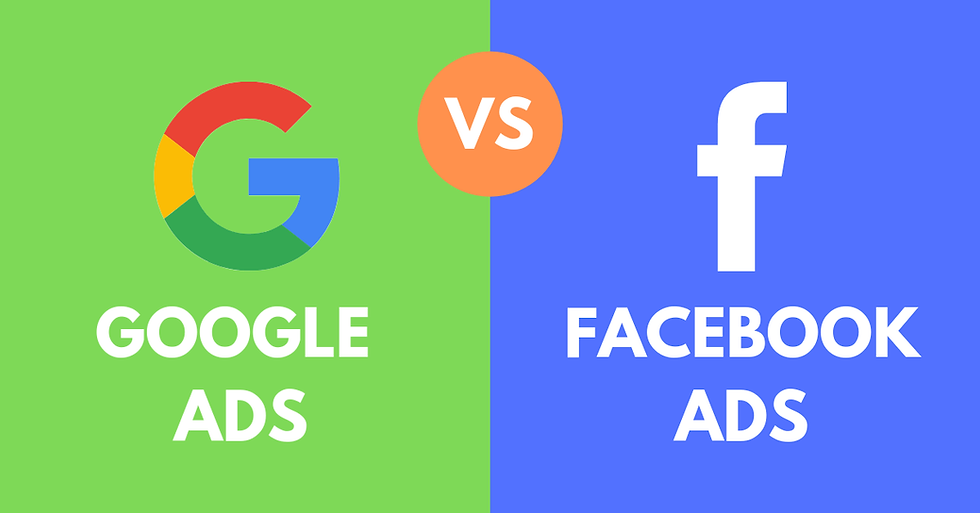The Rise of Micro-Influencers in 2025
- businessflipup
- Jul 18
- 6 min read
A luxury skincare brand spends ₹4 crore on a single Instagram post from a celebrity with 10 million followers, generating impressive reach metrics but modest sales results. Meanwhile, their competitor invests the same amount across 20 micro-influencers with 50,000 followers each, achieving not only substantial reach but also generating authentic conversations, higher engagement rates, and most importantly, actual purchases that drive measurable revenue growth.

This scenario isn't hypothetical; it's playing out across industries as brands discover a fascinating paradox in modern marketing. The bigger the influencer, the smaller their actual influence on purchasing decisions often becomes. While celebrities command massive audiences and generate impressive vanity metrics, a growing number of businesses are finding that smaller, more authentic voices deliver superior business results.
The numbers tell a story that defies traditional marketing wisdom. When a celebrity posts about a beauty product to their millions of followers, the post might generate millions of impressions and thousands of likes, but the actual conversion rate often falls short of expectations. Compare this to a beauty enthusiast with 25,000 engaged followers who shares her genuine morning routine featuring the same product, and you'll frequently find higher engagement rates, more meaningful conversations, and stronger purchasing influence.

This phenomenon has created what many consider the most significant shift in influencer marketing since its inception. Brands are increasingly questioning whether follower count equals influence, and the answer is reshaping marketing budgets, strategies, and expectations across industries from beauty and fashion to technology and automotive.
Understanding the Power Shift
In today's social media ecosystem, businesses face a critical decision that can significantly impact their marketing success and budget allocation. Celebrity endorsements and micro-influencer partnerships represent two fundamentally different approaches to digital influence, yet they operate on distinct principles and serve different purposes in the customer acquisition journey.

While a celebrity might command hundreds of millions of followers, a beauty enthusiast with 50,000 engaged followers often generates more meaningful conversations, higher conversion rates, and stronger purchasing influence than their celebrity counterparts. This phenomenon challenges traditional marketing assumptions about the relationship between reach and actual business impact.
Micro-influencers, typically defined as creators with 10,000 to 100,000 followers, occupy a unique position in the influence spectrum. Unlike celebrities who must appeal to massive, diverse audiences, micro-influencers can afford to be deeply specialized, building authentic relationships within specific niches where their expertise and genuine connections create powerful trust dynamics.
The Engagement Revolution
The fundamental difference between micro-influencers and celebrities lies in their engagement capabilities and audience relationships. Research consistently demonstrates that micro-influencers achieve engagement rates around 4.9%, significantly higher than celebrities who often struggle with rates below 2% despite their massive follower counts.

This engagement advantage stems from the personal connections micro-influencers maintain with their audiences. They respond to comments personally, share authentic behind-the-scenes content, and build communities around shared interests rather than aspirational lifestyles. When a micro-influencer recommends a product, their audience perceives it as advice from a trusted friend rather than a commercial transaction.
The authenticity factor becomes crucial in this dynamic. Micro-influencers can be selective about partnerships, often choosing to work only with brands they genuinely use and love. This selectivity translates into more credible endorsements that feel authentic rather than purely commercial, creating stronger psychological foundations for influence and purchase decisions.
Platform algorithms have evolved to favor authentic engagement over mere reach, meaning micro-influencers' higher engagement rates often result in better organic visibility than celebrity posts with lower interaction rates. This algorithmic preference creates a compounding effect where genuine engagement leads to greater visibility and sustained influence growth.
Celebrity Advantages and Limitations
Despite the micro-influencer surge, celebrities maintain significant advantages that keep them relevant in comprehensive marketing strategies. Their unparalleled ability to generate massive reach and immediate cultural impact remains unmatched for certain marketing objectives, particularly brand awareness campaigns and product launches requiring broad market penetration.
Celebrity endorsements carry inherent "halo effects" that can elevate brand perception and cultural positioning. When respected celebrities associate with brands, they can transform products from commodities into aspirational objects, particularly valuable in luxury markets where status and cultural significance drive purchasing decisions.

The amplification effect of celebrity partnerships extends beyond social media posts. Celebrity endorsements often generate secondary media coverage across traditional and digital platforms, creating multi-channel marketing phenomena that reach audiences far beyond the celebrity's direct followers. This earned media value can justify the substantial investment required for celebrity partnerships.
However, celebrity influence faces certain limitations in the modern marketplace. The commercial nature of celebrity partnerships can reduce their effectiveness in driving genuine consumer action beyond initial awareness. The authenticity gap between celebrity lifestyles and average consumer experiences often makes their endorsements feel disconnected from real-world usage scenarios.
Strategic Selection Framework
The choice between micro-influencers and celebrities should align with specific marketing objectives rather than following industry trends or competitor activities. For campaigns prioritizing immediate reach and cultural impact, celebrities offer unmatched visibility and can achieve massive exposure quickly across diverse demographic segments.

Micro-influencers excel when objectives center on building trust, driving conversions, or establishing credibility within specific market niches. Their engaged audiences are significantly more likely to act on recommendations, making them ideal for performance-based campaigns where ROI can be measured in direct sales and long-term customer relationships.
Budget considerations extend beyond simple cost comparison. Celebrity endorsements require substantial investments but can generate massive reach efficiently. Micro-influencer campaigns, while individually less expensive, often require more complex coordination and relationship management but frequently deliver superior ROI for conversion-focused objectives.

Different industries benefit from different influence types based on consumer behavior patterns. Beauty and wellness brands often see stronger results from micro-influencer partnerships because Indian consumers value authentic testimonials and detailed product reviews. Luxury goods and high-end electronics might benefit more from celebrity endorsements that emphasize status and aspiration.
Target audience demographics play crucial roles in influencer selection. Younger Indian consumers, particularly Gen Z and millennials, often prefer micro-influencers who feel authentic and relatable. Older demographics may still respond more favorably to celebrity endorsements, particularly for premium products where celebrity association signals quality and prestige.
The Hybrid Strategy Advantage
The most sophisticated brands recognize that micro-influencers and celebrities aren't competing alternatives but complementary tools that address different customer journey stages. Successful integrated campaigns often use celebrities for initial awareness and cultural impact while deploying micro-influencers for sustained engagement and conversion optimization.
This hybrid approach leverages the unique strengths of both influencer types: celebrities provide broad visibility and cultural relevance, while micro-influencers add authenticity and detailed engagement that drives purchasing decisions. The result is comprehensive campaigns that both inspire and convert, building awareness while establishing trust.
Geographic and demographic segmentation becomes possible with hybrid strategies. Brands can use celebrities for national campaigns while activating local micro-influencers for community-specific engagement, creating both broad awareness and locally relevant connections that feel authentic to different market segments across India's diverse regions.
Content diversification represents another hybrid advantage. Celebrities create high-production value content showcasing products in aspirational settings, while micro-influencers provide detailed tutorials, honest reviews, and practical demonstrations that build trust and provide tangible value to potential customers.
Future Implications and Strategic Recommendations
The rise of micro-influencers signals broader cultural shifts toward authenticity, community, and genuine connection in digital marketing. Modern consumers have developed sophisticated abilities to detect and dismiss inauthentic marketing attempts, demanding higher levels of transparency and value from the content they consume.

Technological advances continue democratizing influence, making high-quality content creation accessible to micro-influencers without massive production budgets. Platform algorithms increasingly favor authentic engagement over reach, creating sustainable advantages for micro-influencers whose content generates genuine interaction rather than passive consumption.
The future belongs to brands that understand different types of influence serve different purposes in comprehensive marketing strategies. Rather than choosing between micro-influencers and celebrities, successful brands will develop integrated approaches that leverage both types of influence appropriately based on specific objectives and target audiences.

For brands seeking immediate cultural impact and broad awareness, celebrities remain invaluable for their reach and cultural significance. For businesses prioritizing authentic relationships, niche targeting, and conversion optimization, micro-influencers offer superior engagement and trust-building capabilities that translate directly into measurable business results.
Conclusion: Redefining Marketing Power
The question of whether micro-influencers are more powerful than celebrities depends entirely on how we define power in the modern marketing landscape. If power means reach and immediate visibility, celebrities maintain their advantage. If power means the ability to influence actual purchasing decisions and build lasting brand relationships, micro-influencers demonstrate superior effectiveness.
The most successful marketing strategies will combine both approaches strategically, using celebrities for reach and cultural relevance while relying on micro-influencers for trust, engagement, and conversion. This integrated approach addresses the complete customer journey, from initial awareness through final purchase decision, maximizing the impact of marketing investments.
Rather than viewing micro-influencers and celebrities as competing alternatives, forward-thinking marketers recognize them as complementary tools that serve distinct purposes within comprehensive growth strategies. Your investment should be guided by a clear understanding of your marketing objectives, target audience preferences, and desired business outcomes rather than industry trends or competitor activities.
The influence revolution is reshaping digital marketing fundamentals, and brands that adapt to these changes while maintaining strategic flexibility will gain significant competitive advantages in an increasingly sophisticated marketplace where authenticity and genuine connection drive sustainable business growth.




Comments